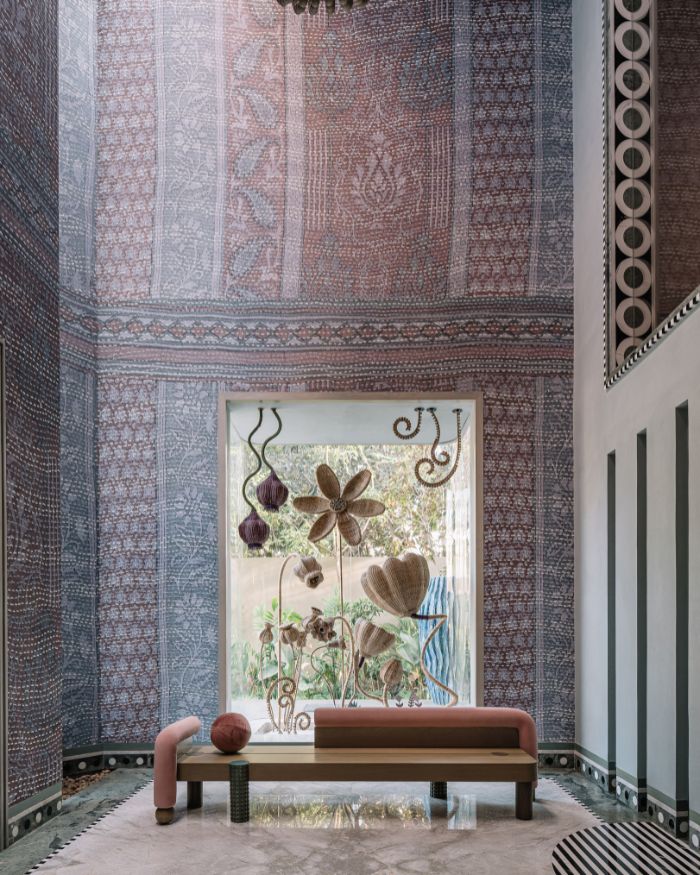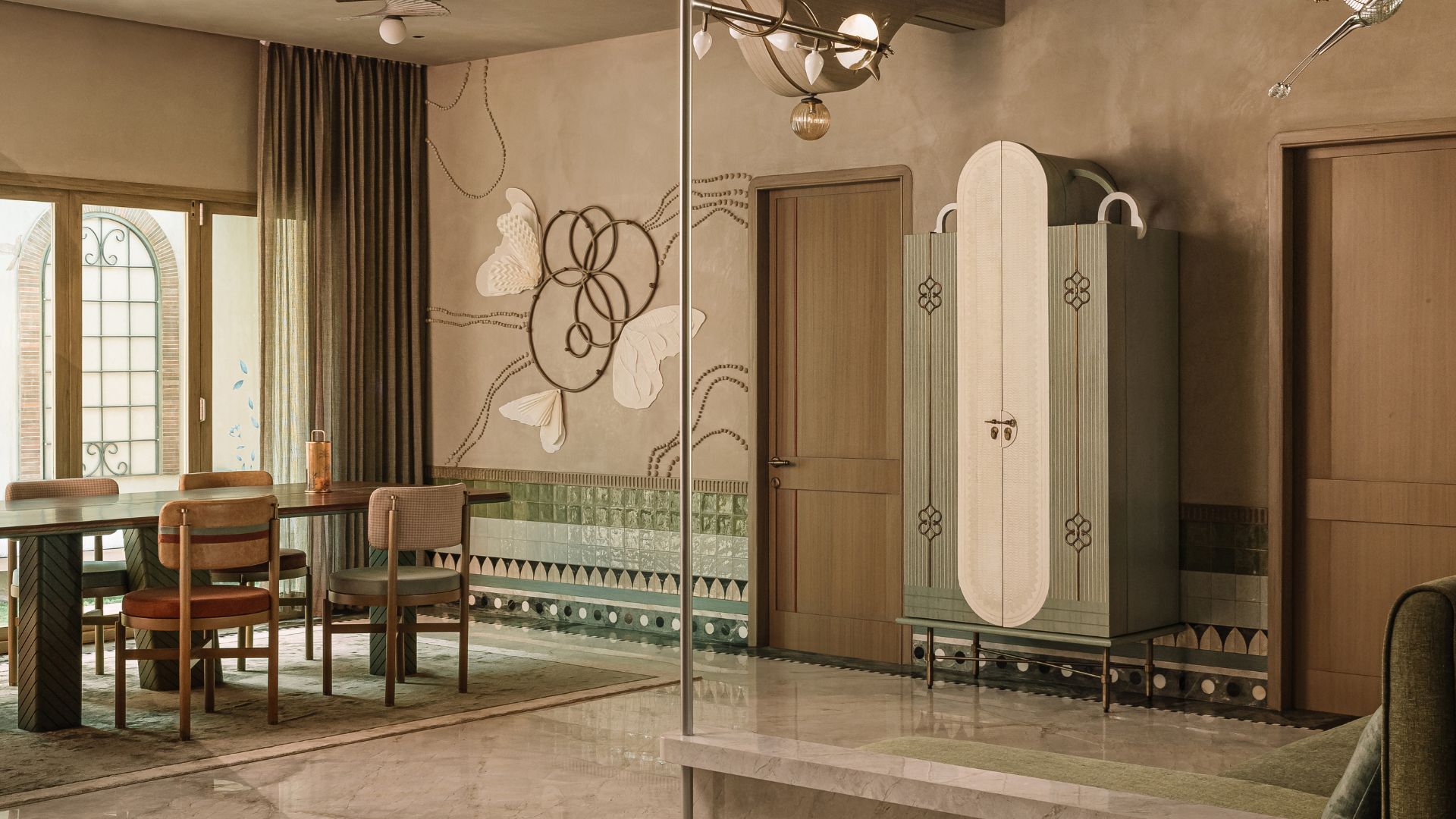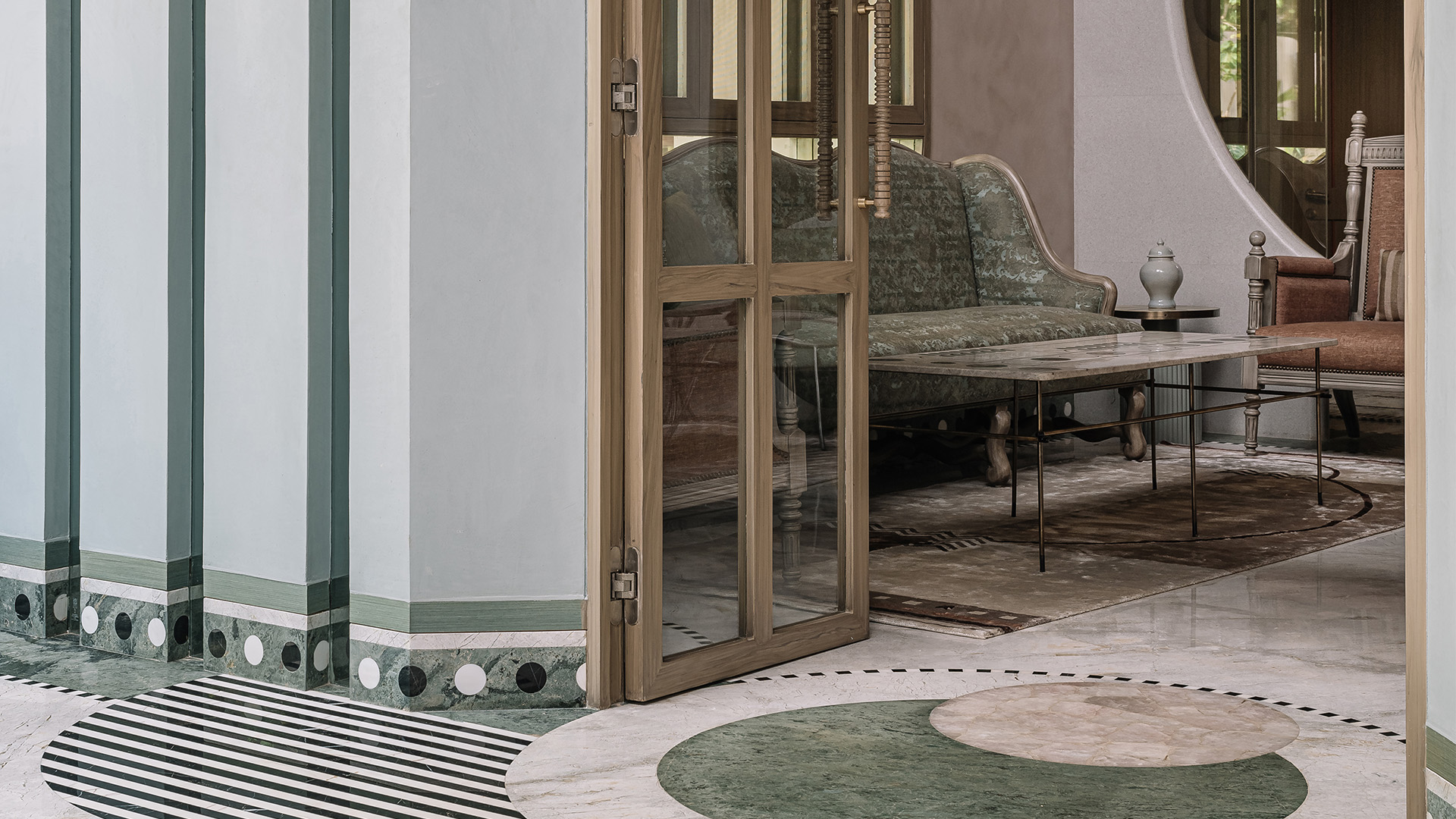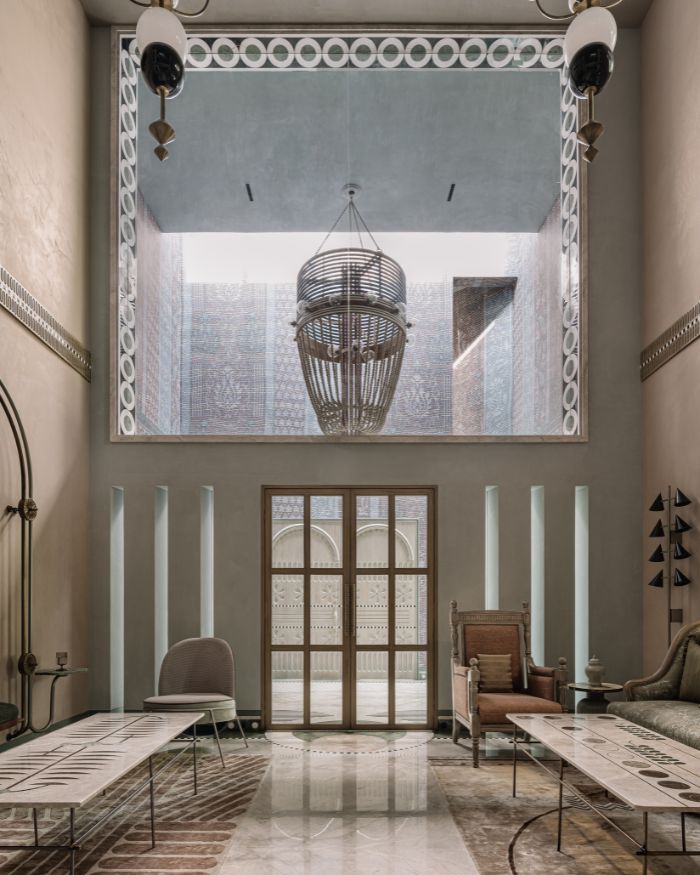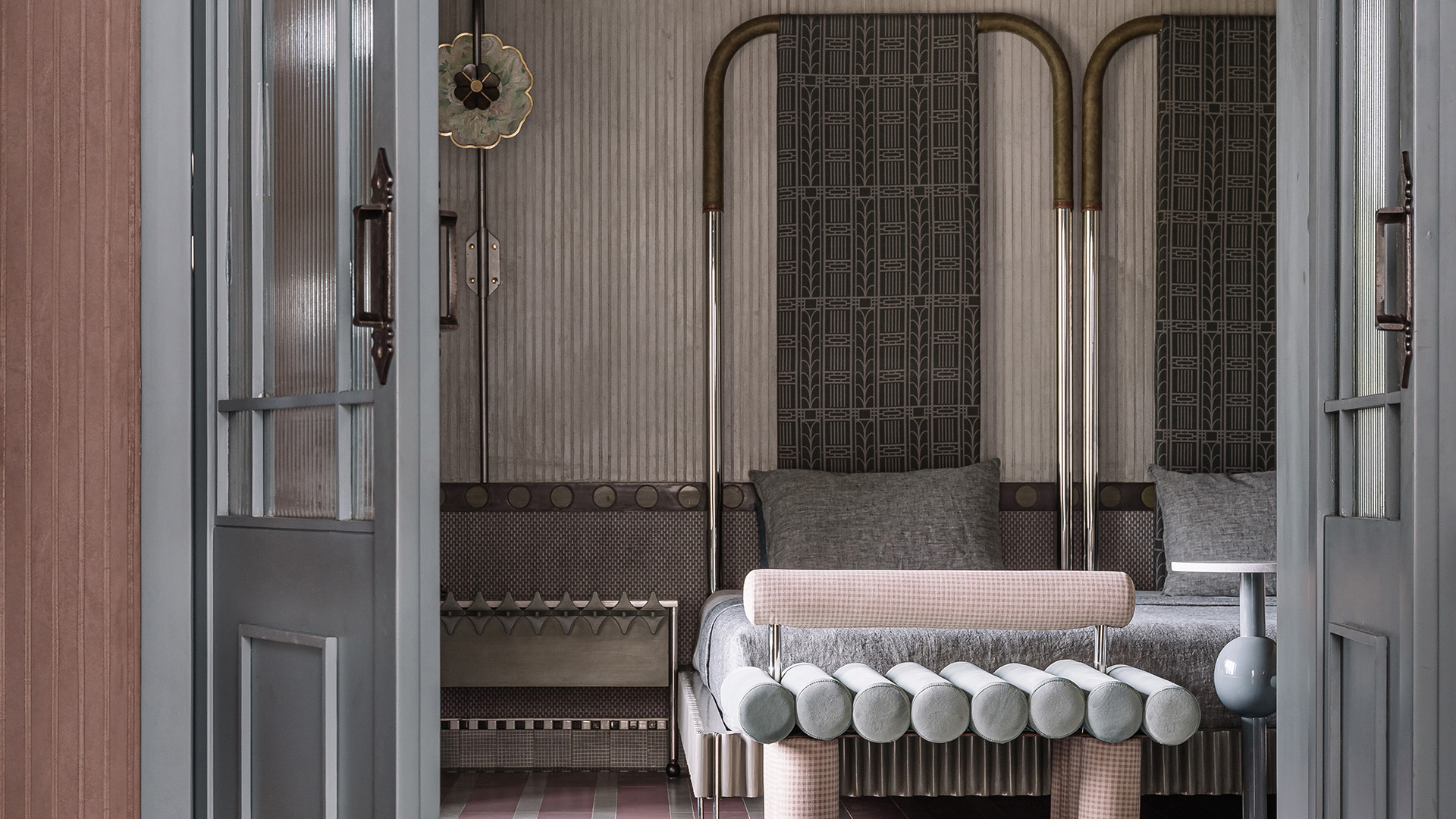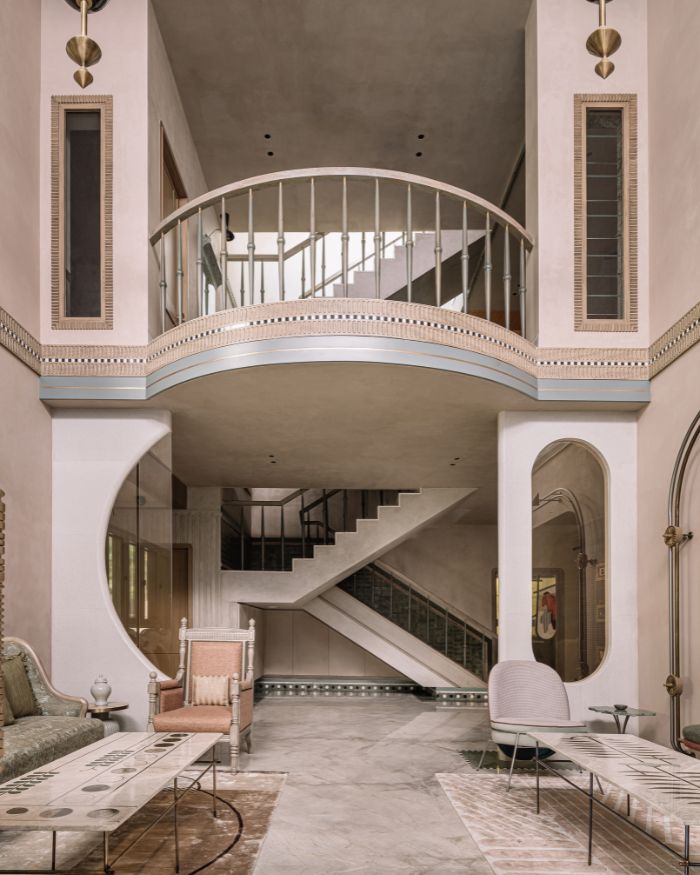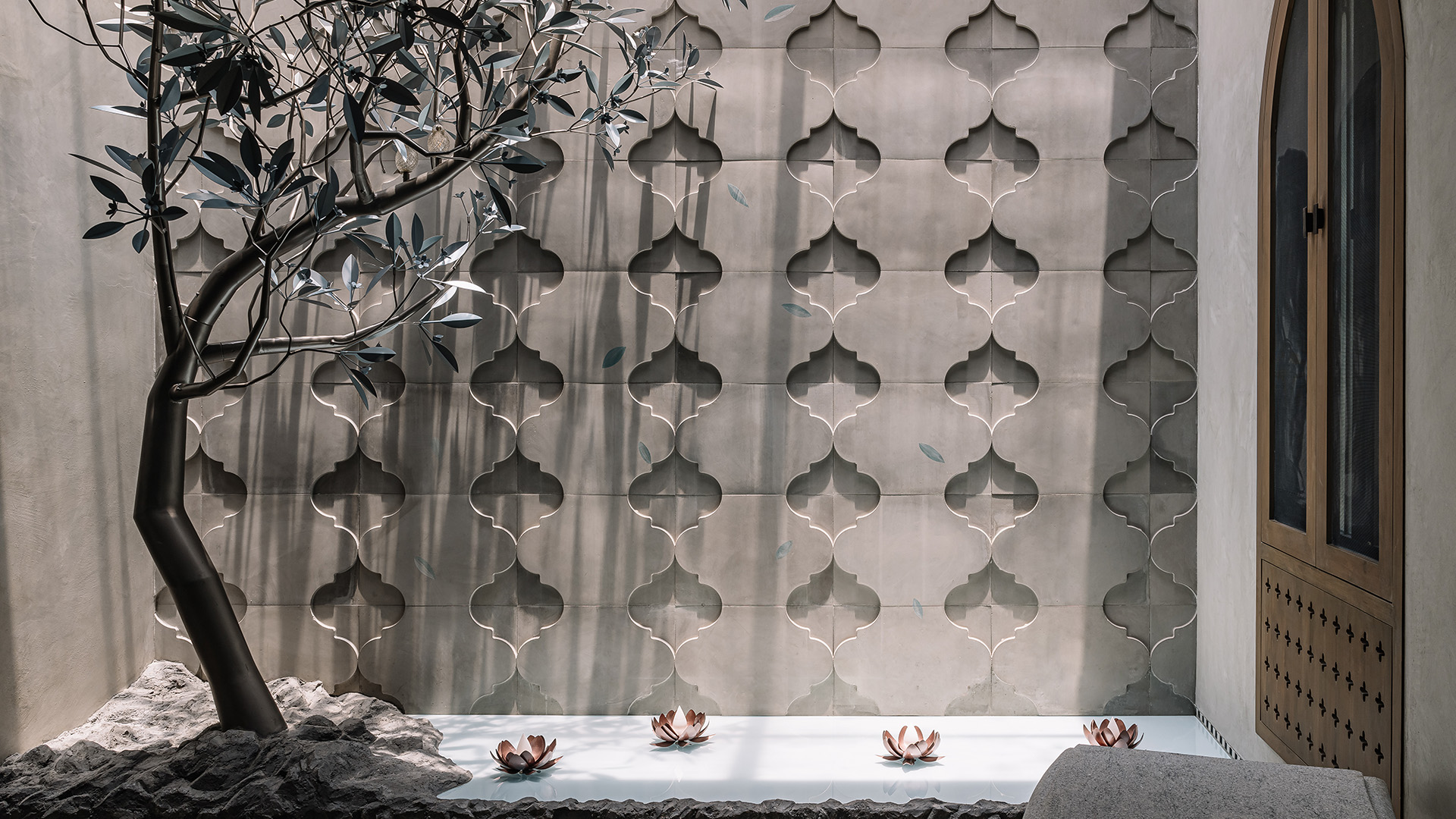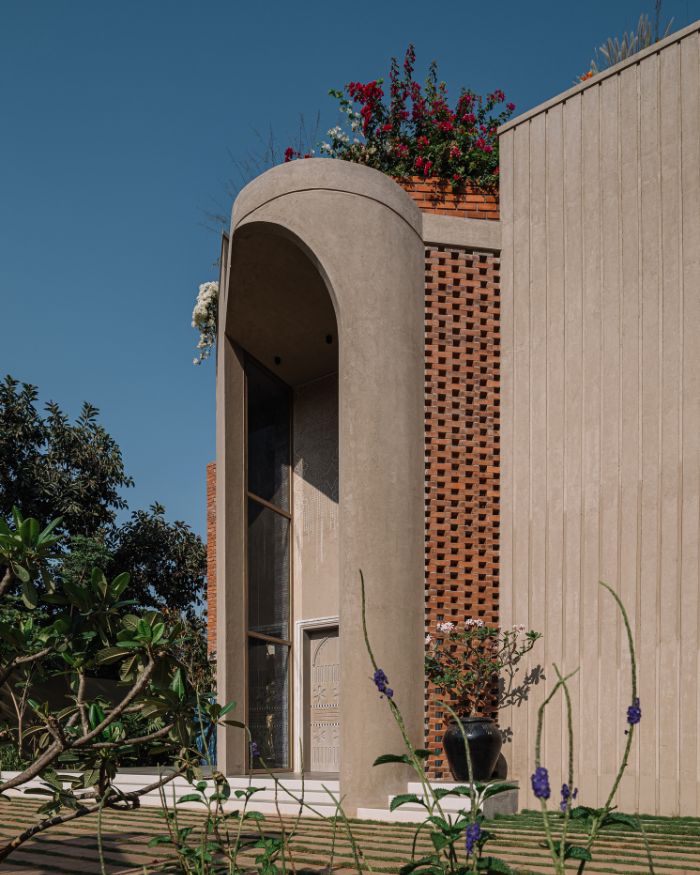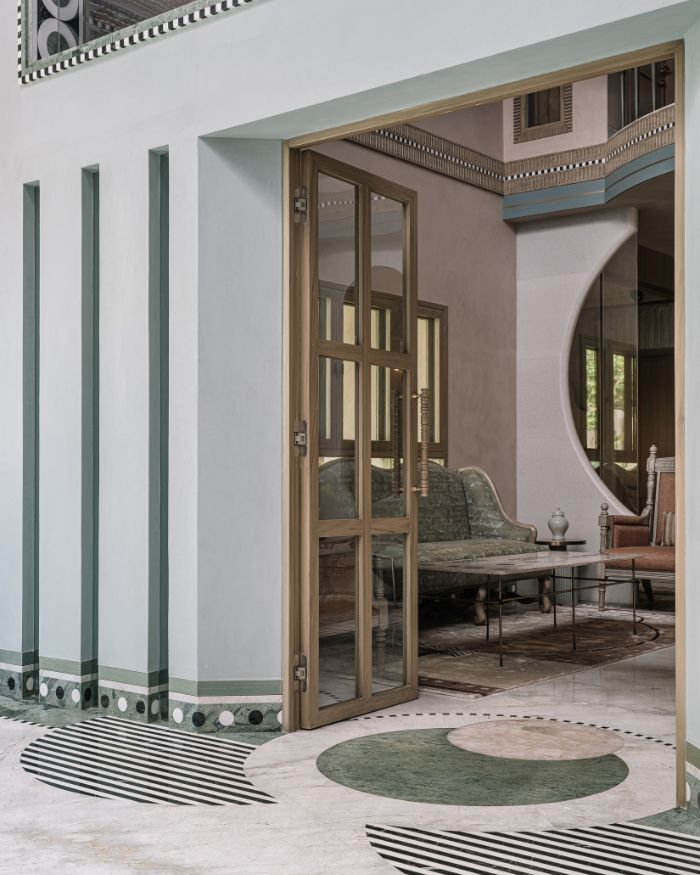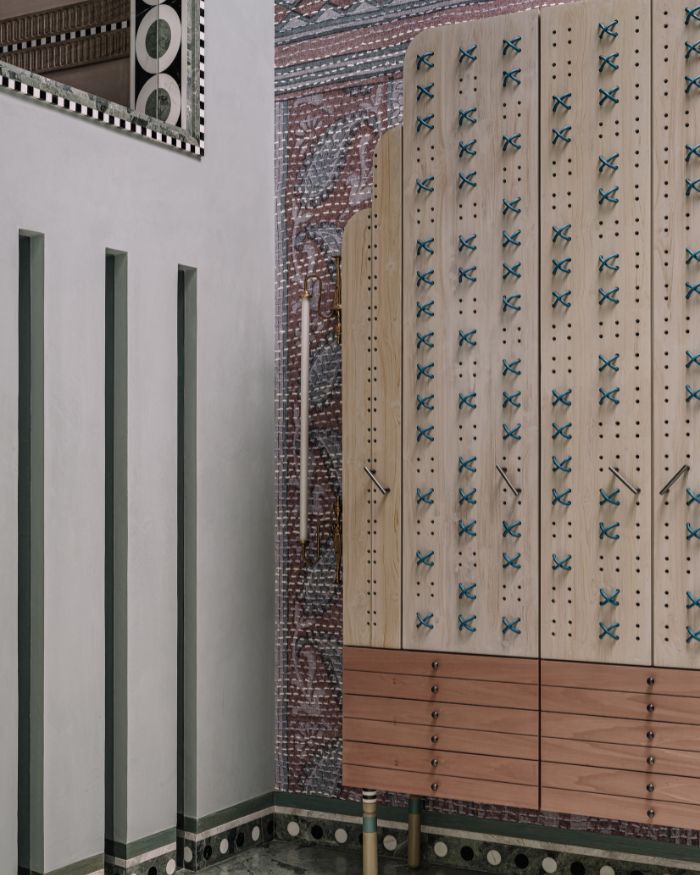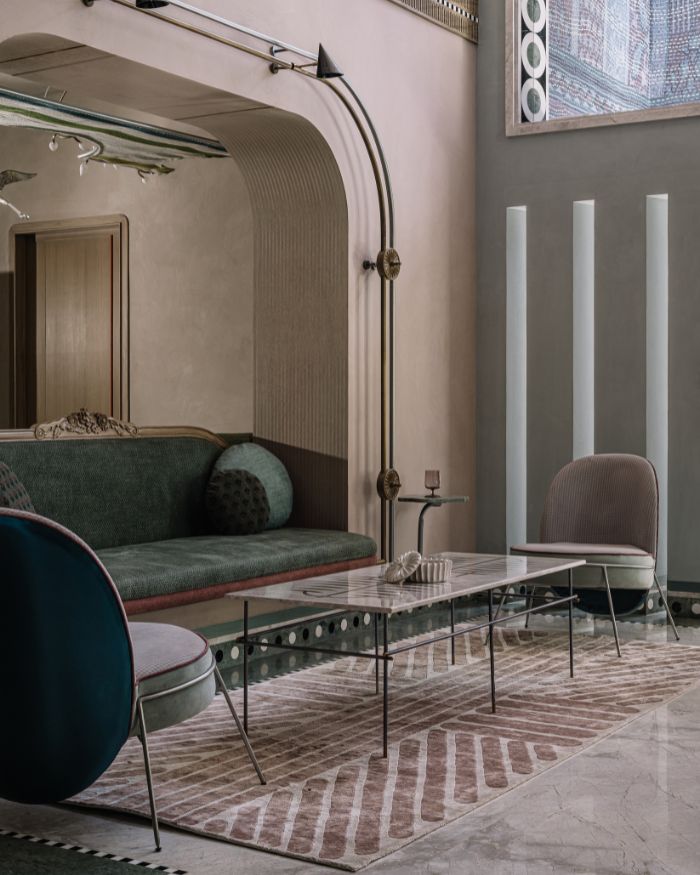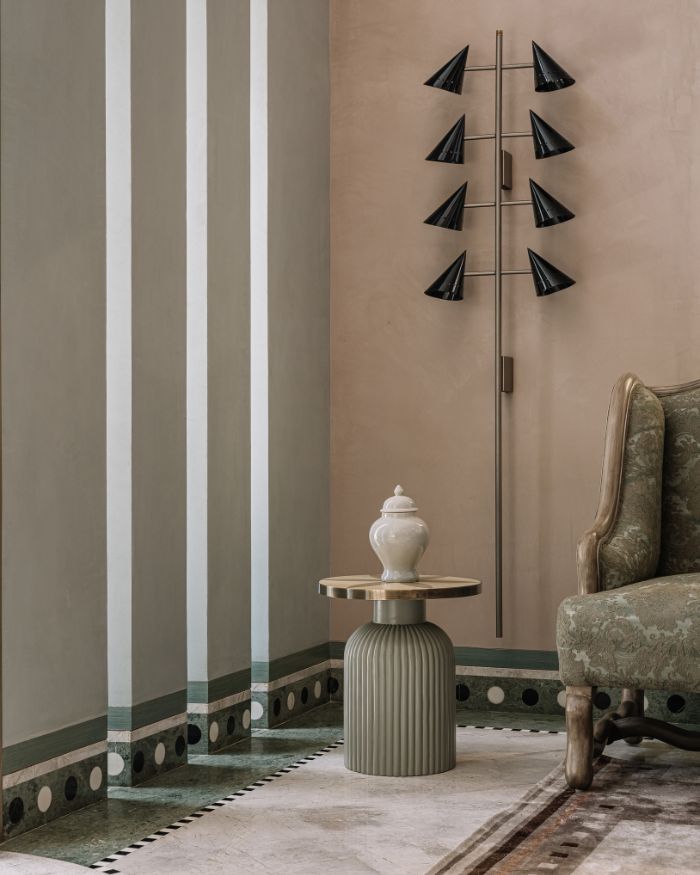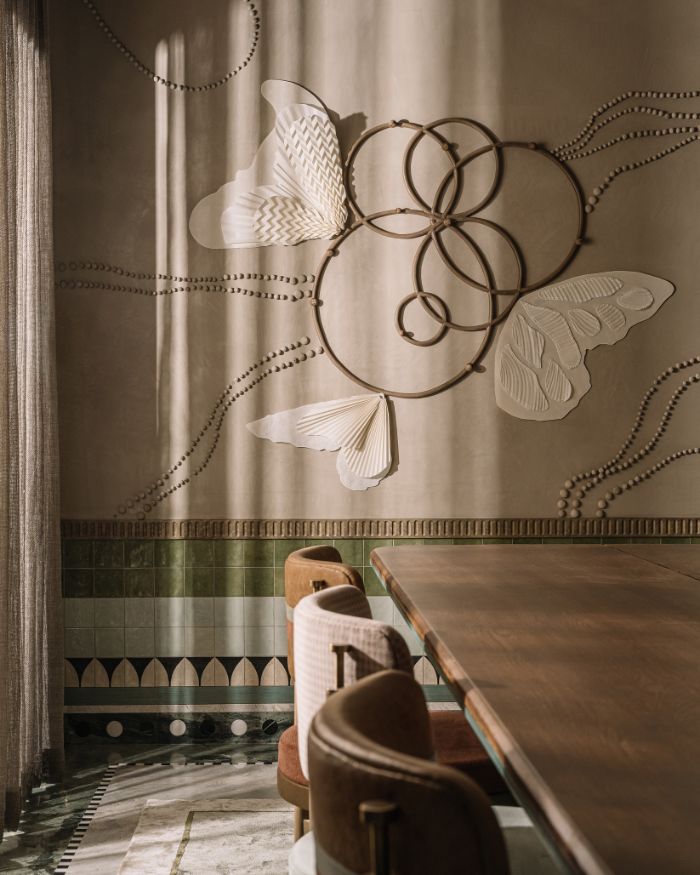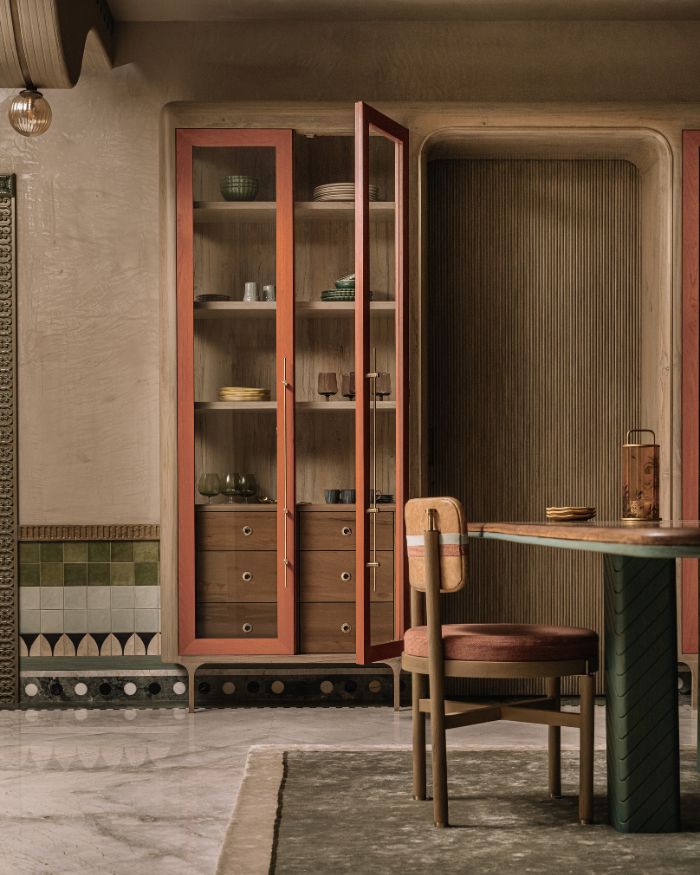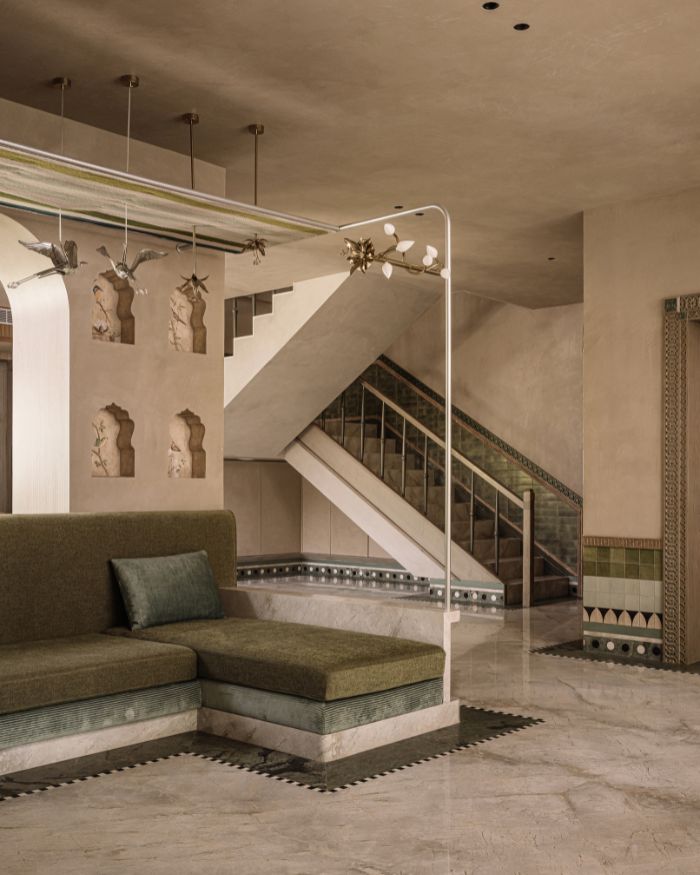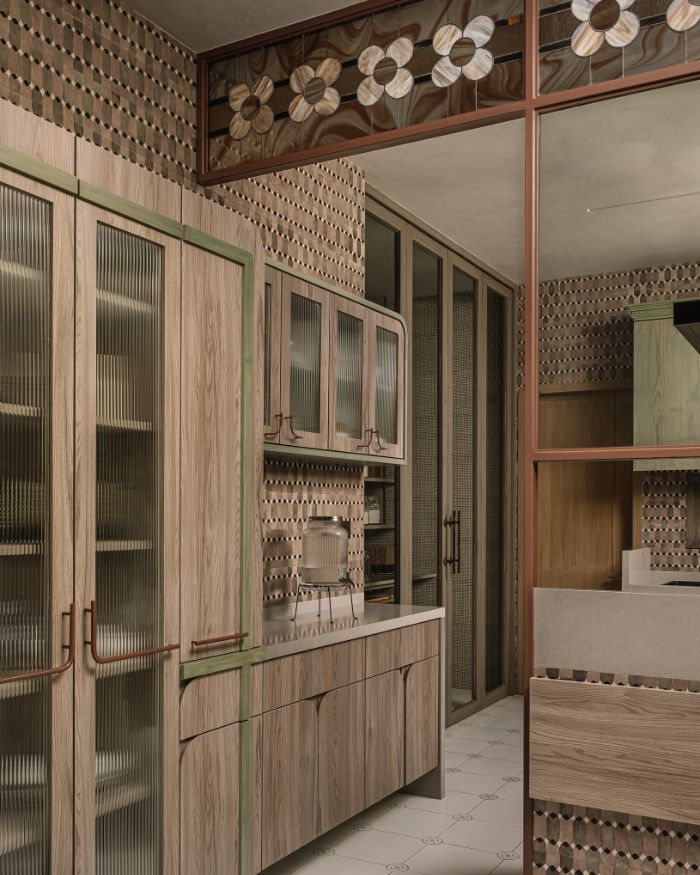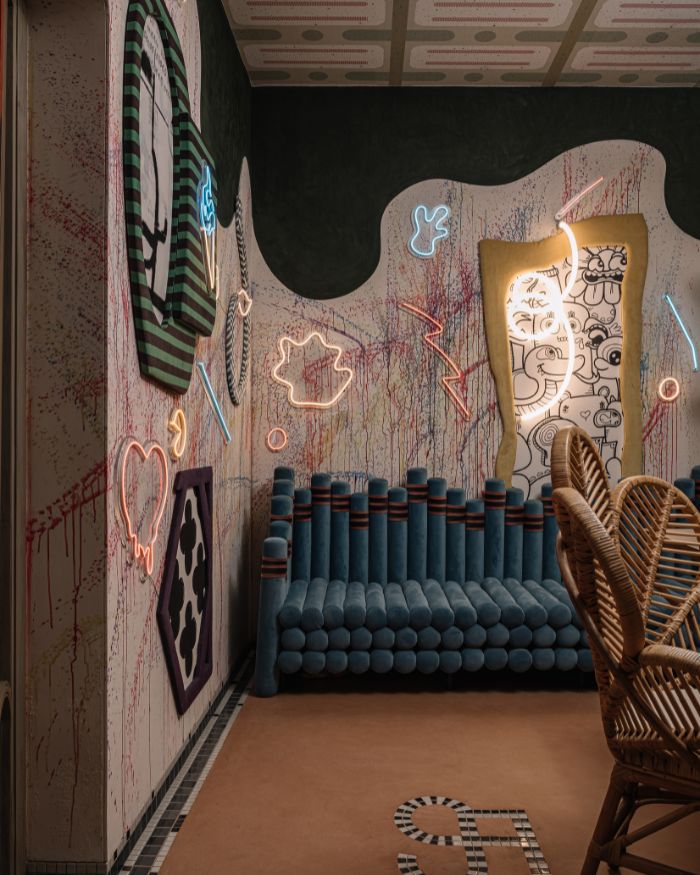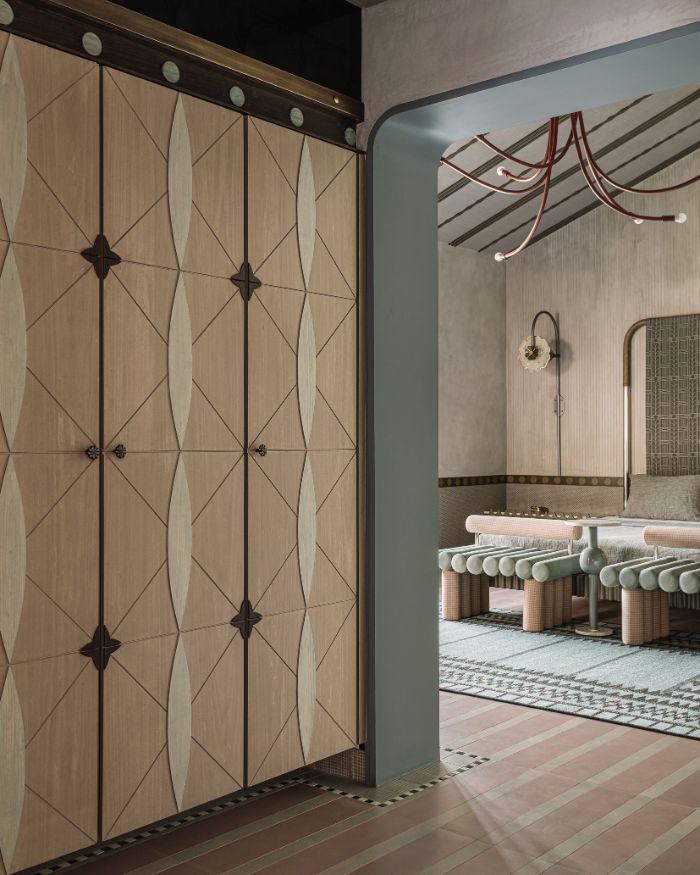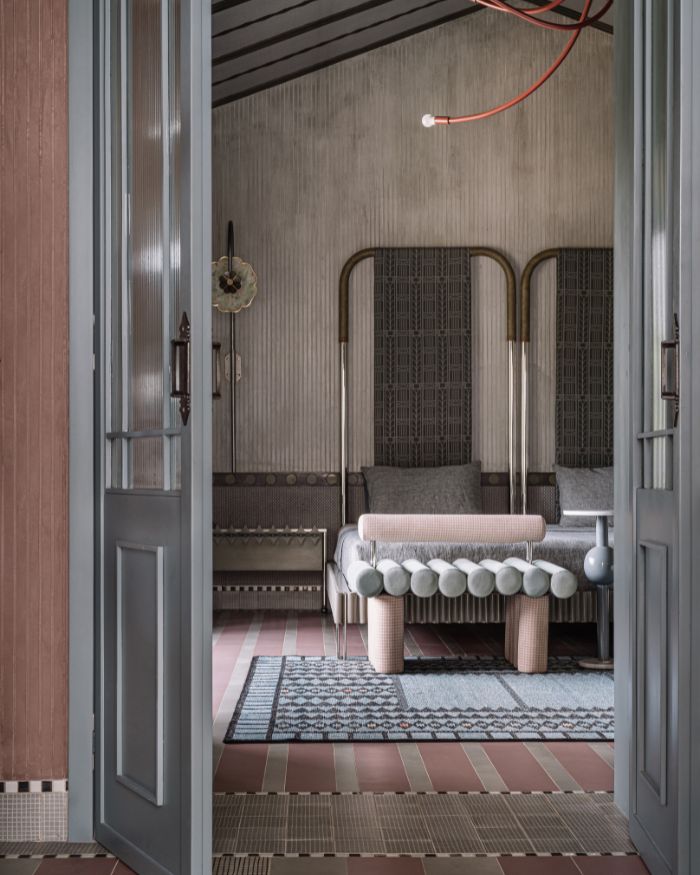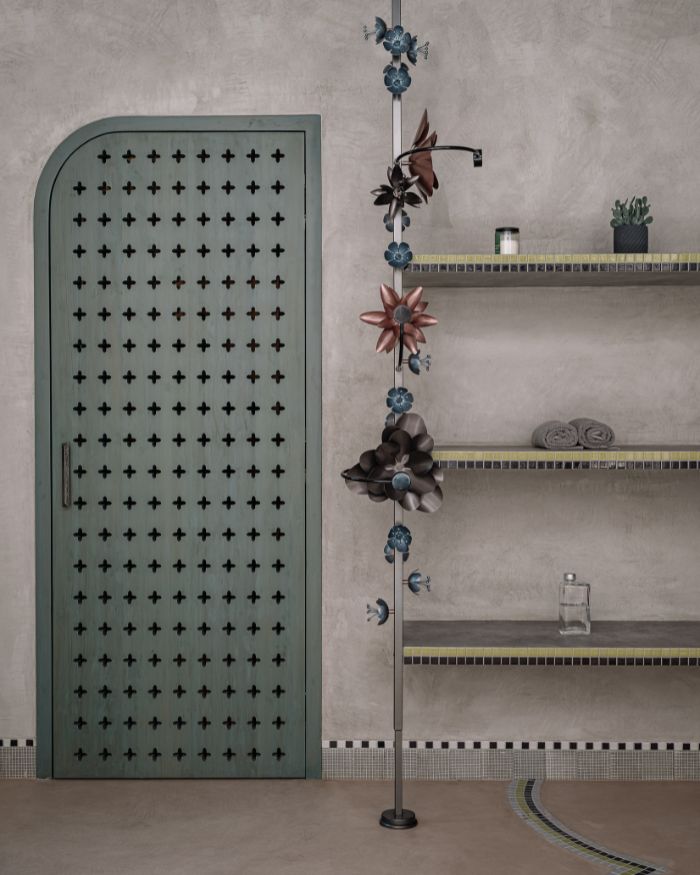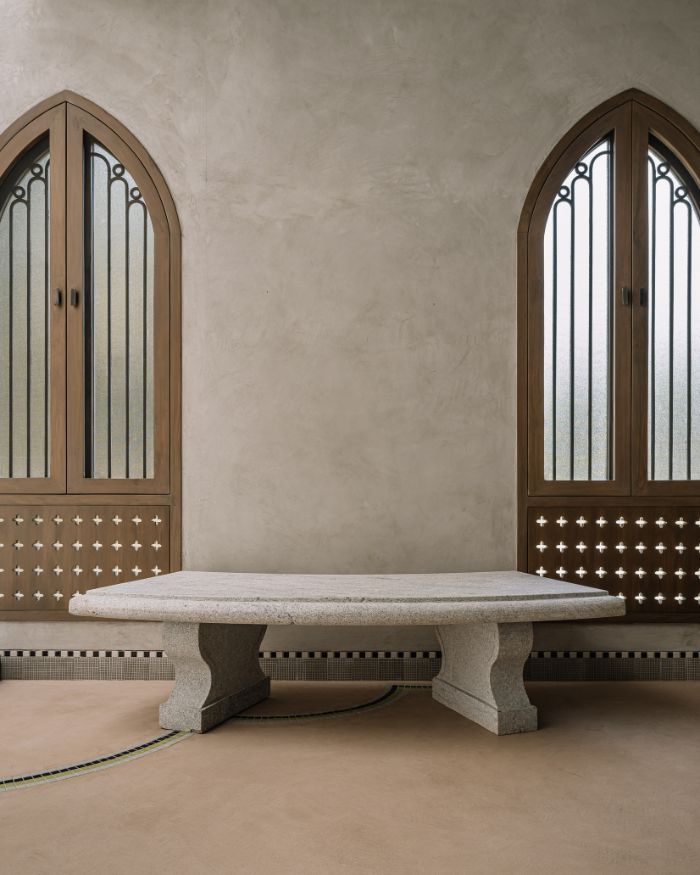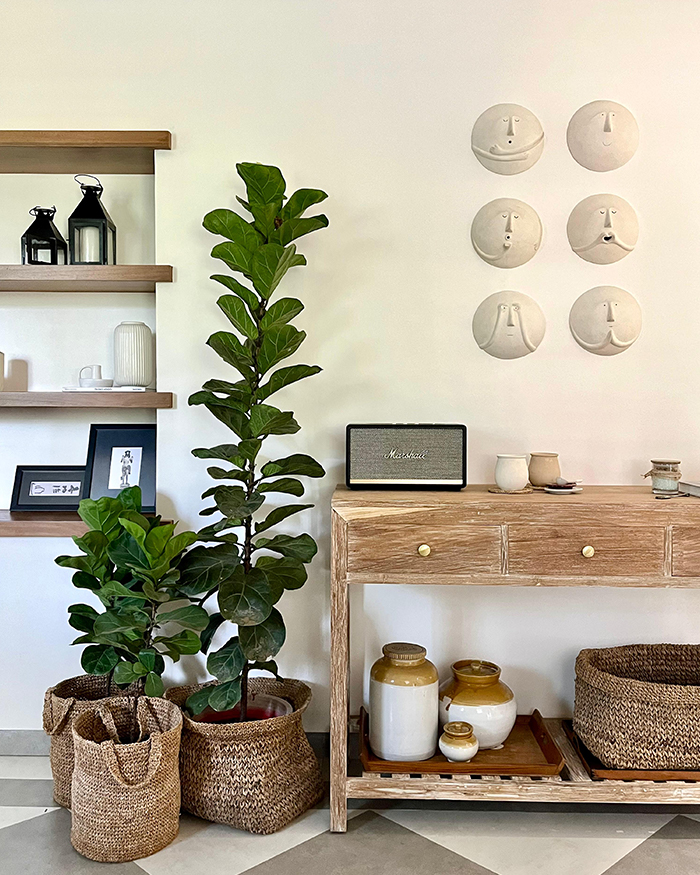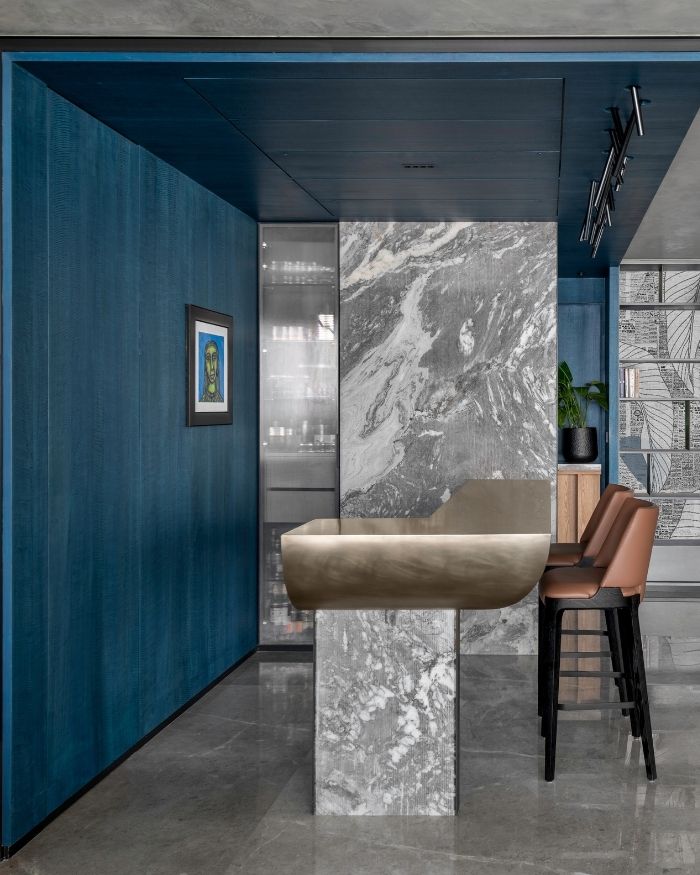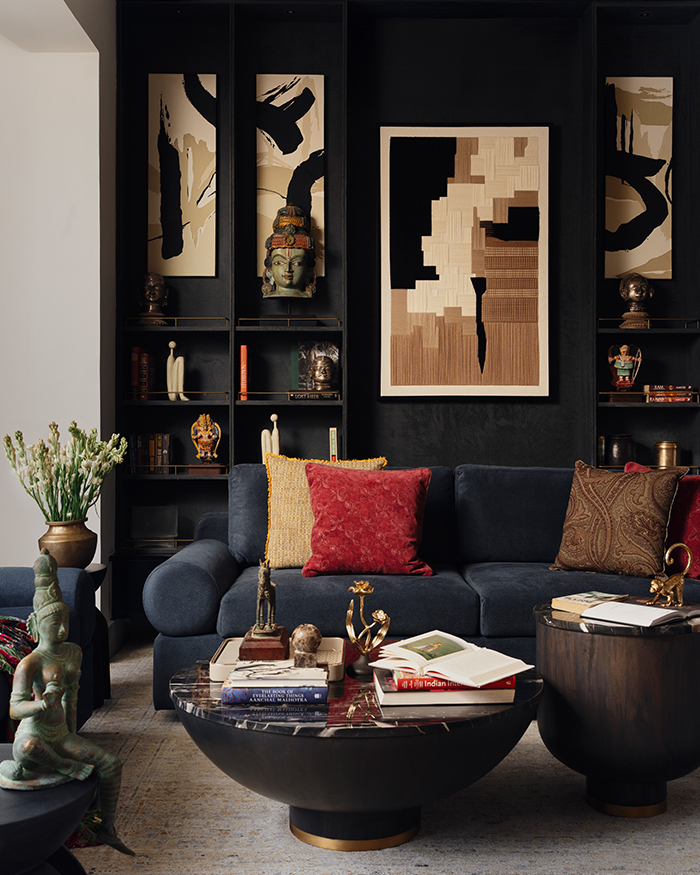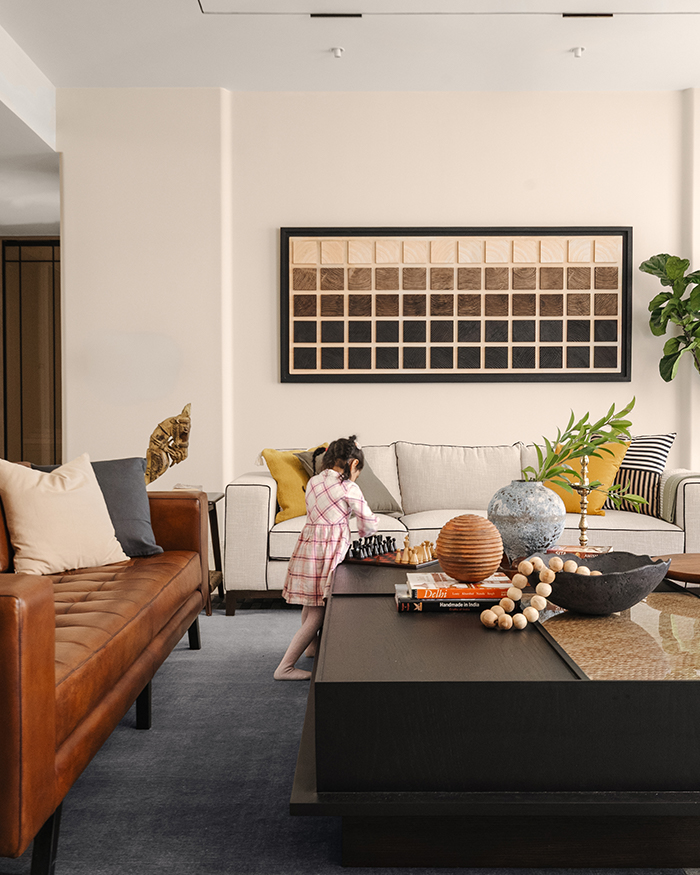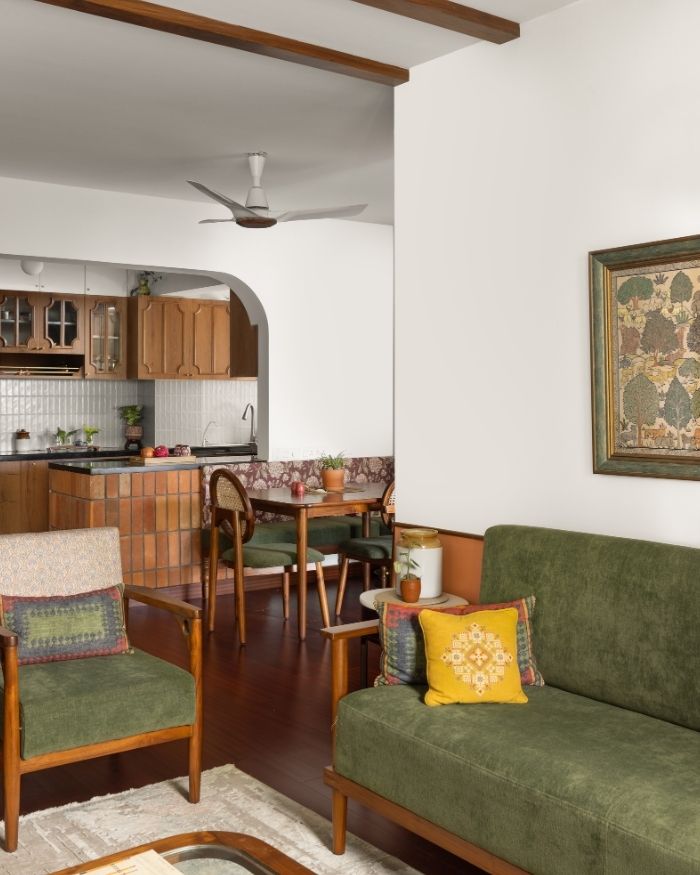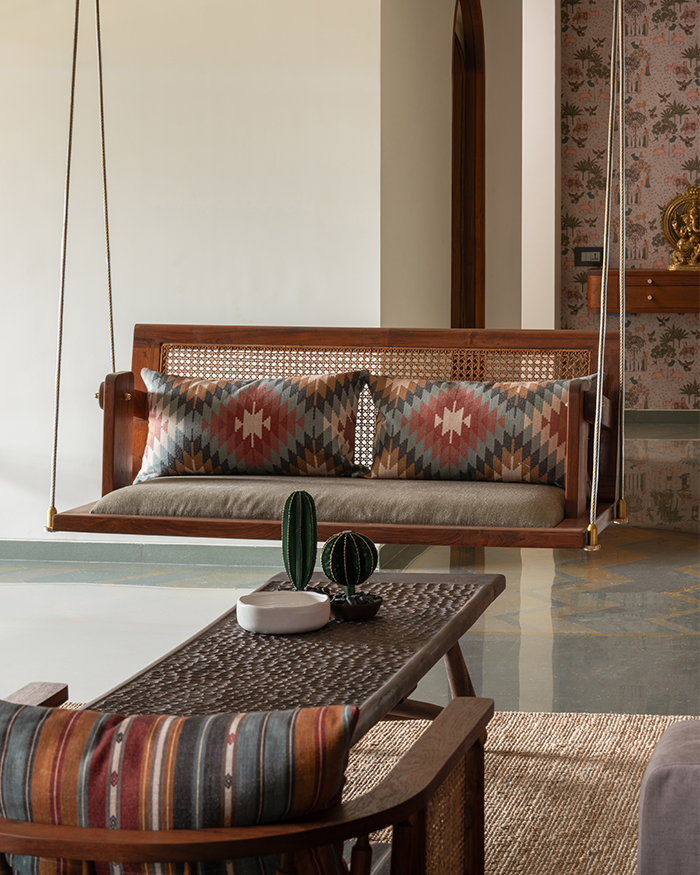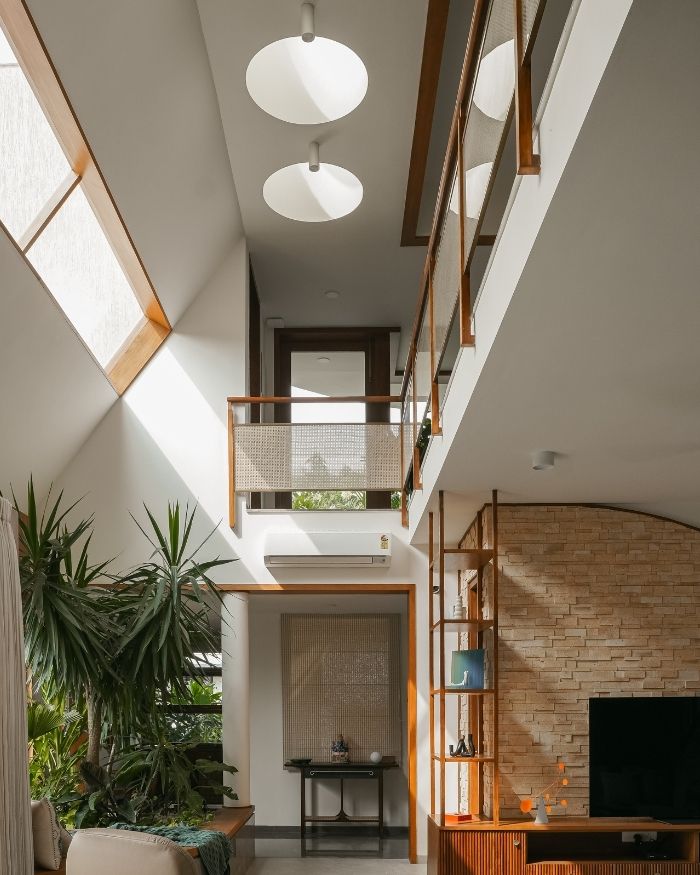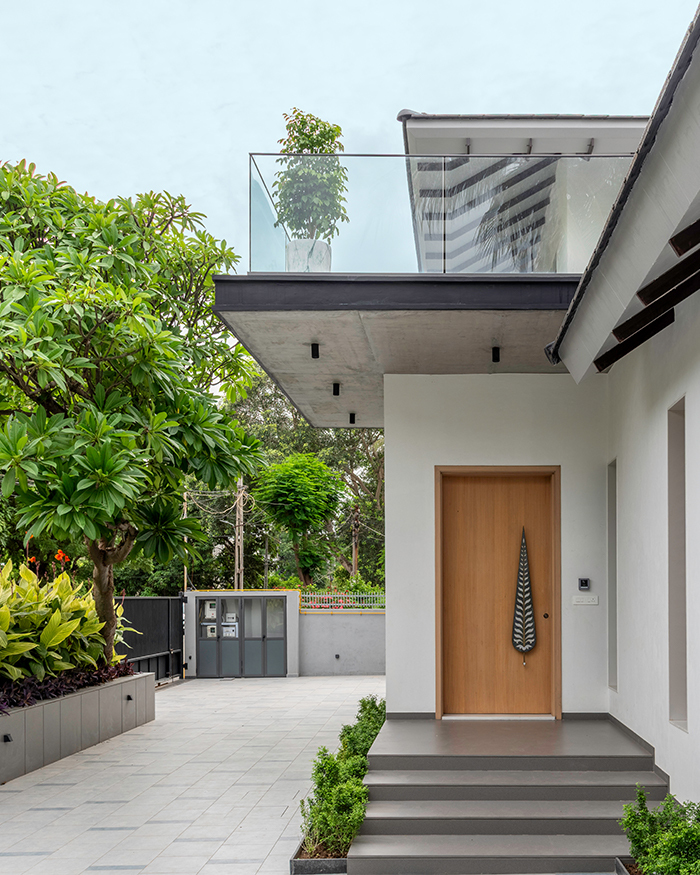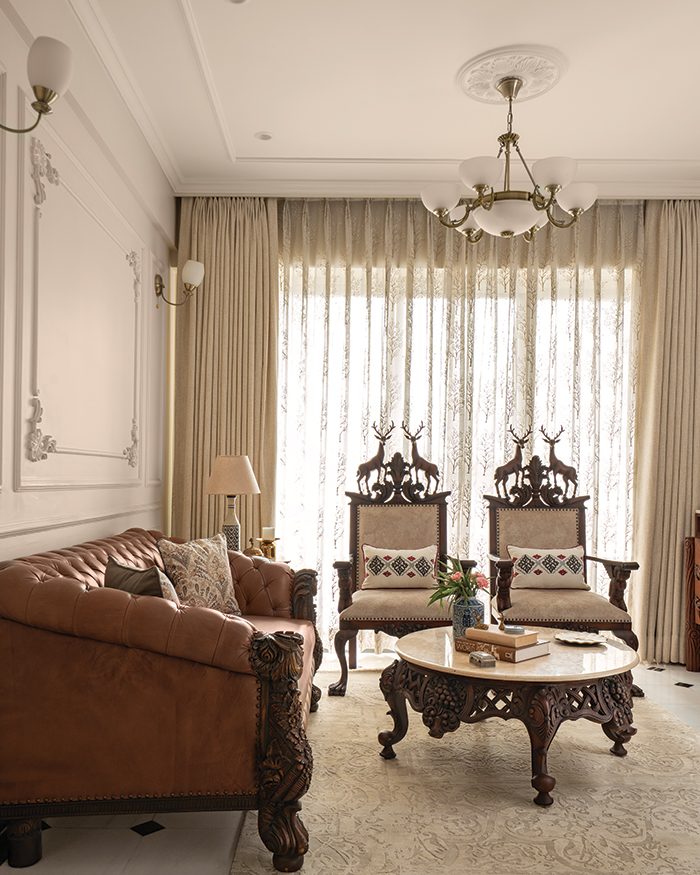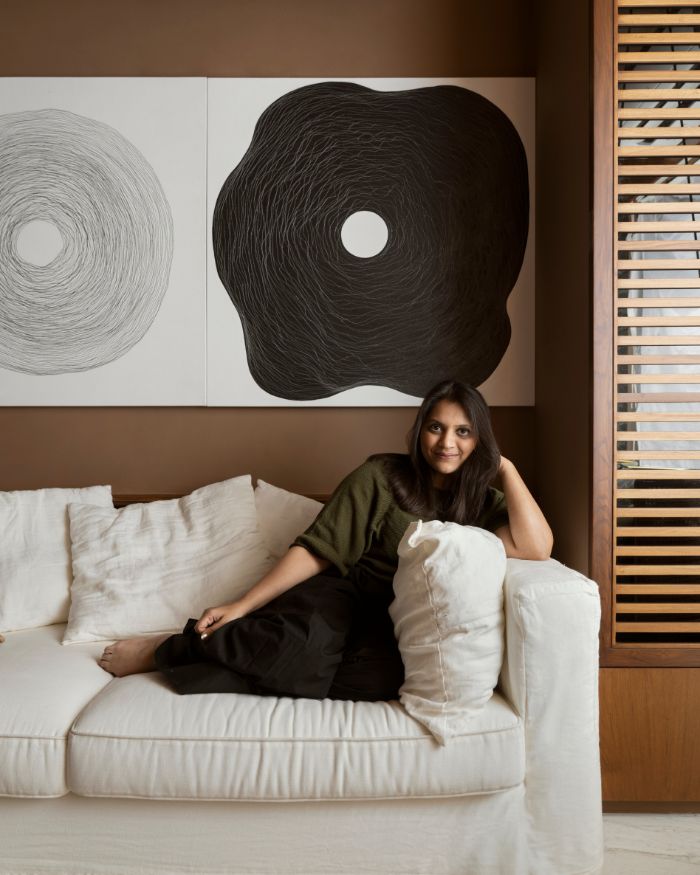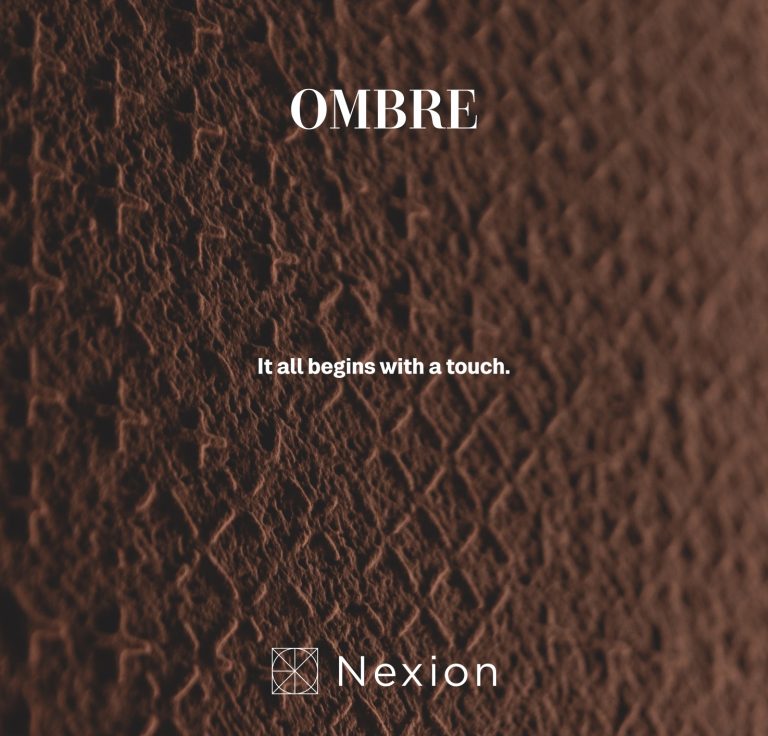Watching a Kanjeevaram saree take birth out of mere threads. The precise, rhythmic singularity of drawing a kolam. If you’ve ever seen a skilled craftsperson at work up close, you’d agree that their deftness at times almost appears like magic. So when Smita Thomas, Chief Hatter at Multitude of Sins, was asked to build an unconventional yet culturally rooted home in Chennai true to a family of four, it is this very everyday magic she chose to call back to.
Dubbed Pennyroyal Tea, Multitude of Sins provides India’s handicrafts a befitting architectural stage to shine on. Hundreds of artisans have custom-made every single element in this 12,000 sq ft home. From the 400-kg chandelier in the foyer with channapatna-like wooden beads to the kolam patterns that decorate the facade, the space leans into cultural storytelling with the firm’s characteristic whimsy. As Smita aptly puts it, “We weren’t just designing interiors, we were building a world, piece by piece, that reflects the soul of a family.”
“We weren’t interested in fantasy that floats. It had to have weight: local materials, hand-executed details and textures that speak of skill and time.” — Smita Thomas
